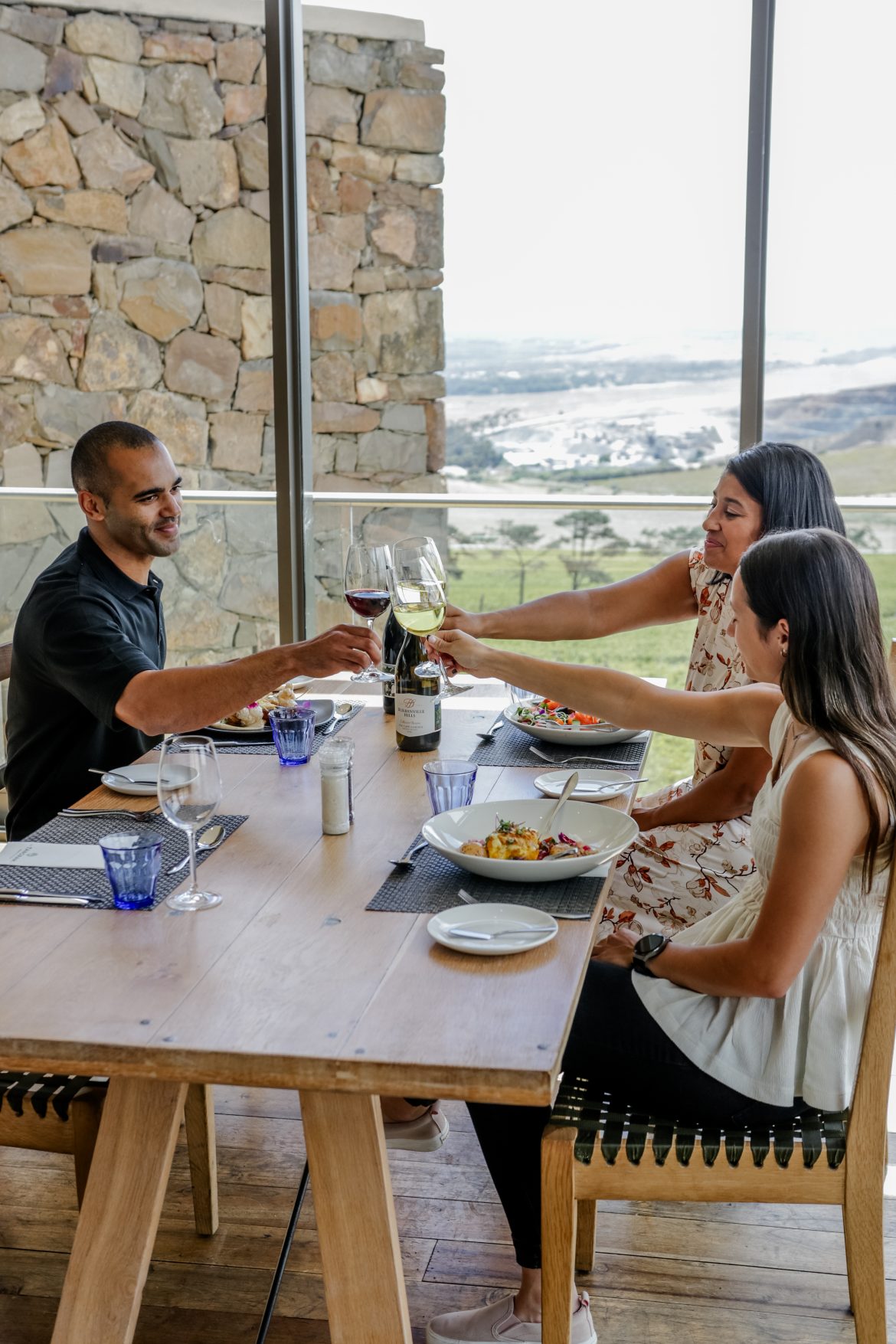Not many vineyards can say their pinotage vines grow around 11 km from the Atlantic Ocean or that prevailing winds keep the temperature low and maintain a healthy microclimate for their vines. Can they boast that their vines grow slower than in other regions, giving grapes more time to ripen, leading to more fruit-driven flavours, balanced acidity and a concentrated colour? Or tell you the wines you’re about to taste are true to their origin?
We arrive at Durbanville Hills Winery, an earth-toned, modern structure, all clean, straight lines and minimalism, emerging from a rolling patchwork of verdant valleys. Its expansive windows and wrap-around terraces maximise the view of Table Bay. Geography, I’m to discover, makes its wine unique.
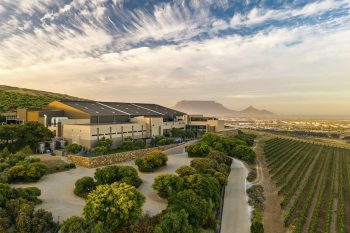
We join Cellar Master Pieter-Niel Rossouw for a guided cellar tour to learn about the winery’s history and taste several wines from its premium portfolio.
In 1999, they released their first vintage in a joint venture with local farms and the then Distell (now Heineken Beverages). Pieter explains that because the name Durbanville Hills comes from a specific appellation, the nine member farms – Klein Roosboom, Ongegund, Hillcrest, Maastricht, Morgenster, Bloemendal, Hooggelegen, Welbeloond and De Grendel, all within 10-km from the cellar – may only produce wine using grapes from that area.
In various vintages of Durbanville Hills’ Sauvignon Blancs, there is green pepper, blackcurrant, passionfruit and ripe figs, and in its Merlots, mint-chocolate, plums, tomato paste and Marmite – one of our party describes the Luipaardsberg Merlot 2009 as a Bloody Mary on steroids, a tomato and Worcester sauce cocktail.
One way Durbanville Hills is looking to the future is by introducing a small cellar within the main cellar, allowing winemakers to be innovative, creating hand-crafted wines with different styles and cultivars using a small basket press, scaled-down fermentation tanks and amphorae (clay vases).
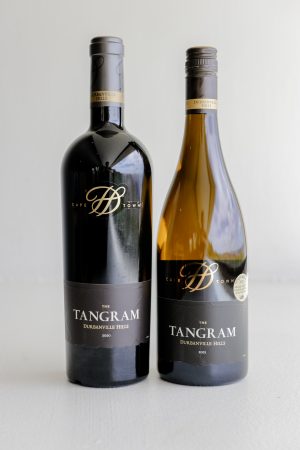
Find out more here.
Lingering over lunch
We sit at a long table in Tangram Restaurant, a contemporary space with a double-volume ceiling. Head Chef Tamzyn Ehlers draws inspiration from South African cuisine, not in the traditional sense but using fresh, local ingredients creatively.
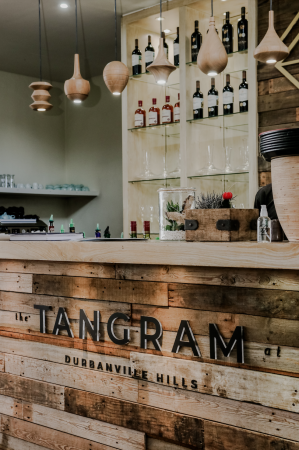
I start with a risotto cake infused with beetroot, served with beetroot purée, black garlic aioli and a fresh rocket salad, while my friend opts for the pickled fish cake – Tangram pickles the fish themselves – served with pickled vegetables, a crispy seed and onion crumb, apricot soubise and butternut purée.
My favourite, which Chef Tamzyn tells us has been on the menu since before she started working there eight years ago, is the four-hour braised pork belly, fused with rooibos and served with a sweet potato purée, sweet potato crisps, crackling, baby vegetables and rooibos jus. I close my eyes as the exquisite, butter-soft lamb and velvety sweet potato melt on my tongue, all else falling away.
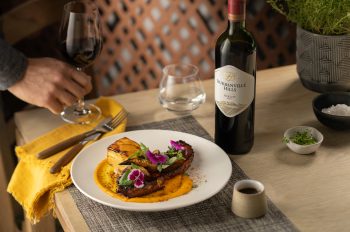
Last but not least is dessert, a textural masterpiece of the crumbly biscuity casing of a choux bun, giving way to a delightfully marshmallowy peppermint cream centre when cracked open with a spoon, ripe for the mingling with sides of peppermint sauce, caramel ice cream and peppermint crisp. I have tasted why Restaurant Week awarded Tangram Best Restaurant in South Africa (2017, 2023) and Best Restaurant in the Winelands (2015, 2016).
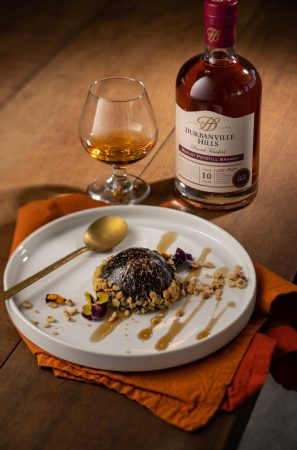
Hop-on-hop-off wine safari
Ahead of Durbanville’s 200th-anniversary celebrations next year, a hop-on-hop-off Wine Safari operates between the region’s wine farms. It costs R300 pp (excluding tastings and additional activities wine farms offer) and operates from Tuesday to Sunday, from 9.30 am to 5.30 pm.
Find out more here.
ALSO SEE:

